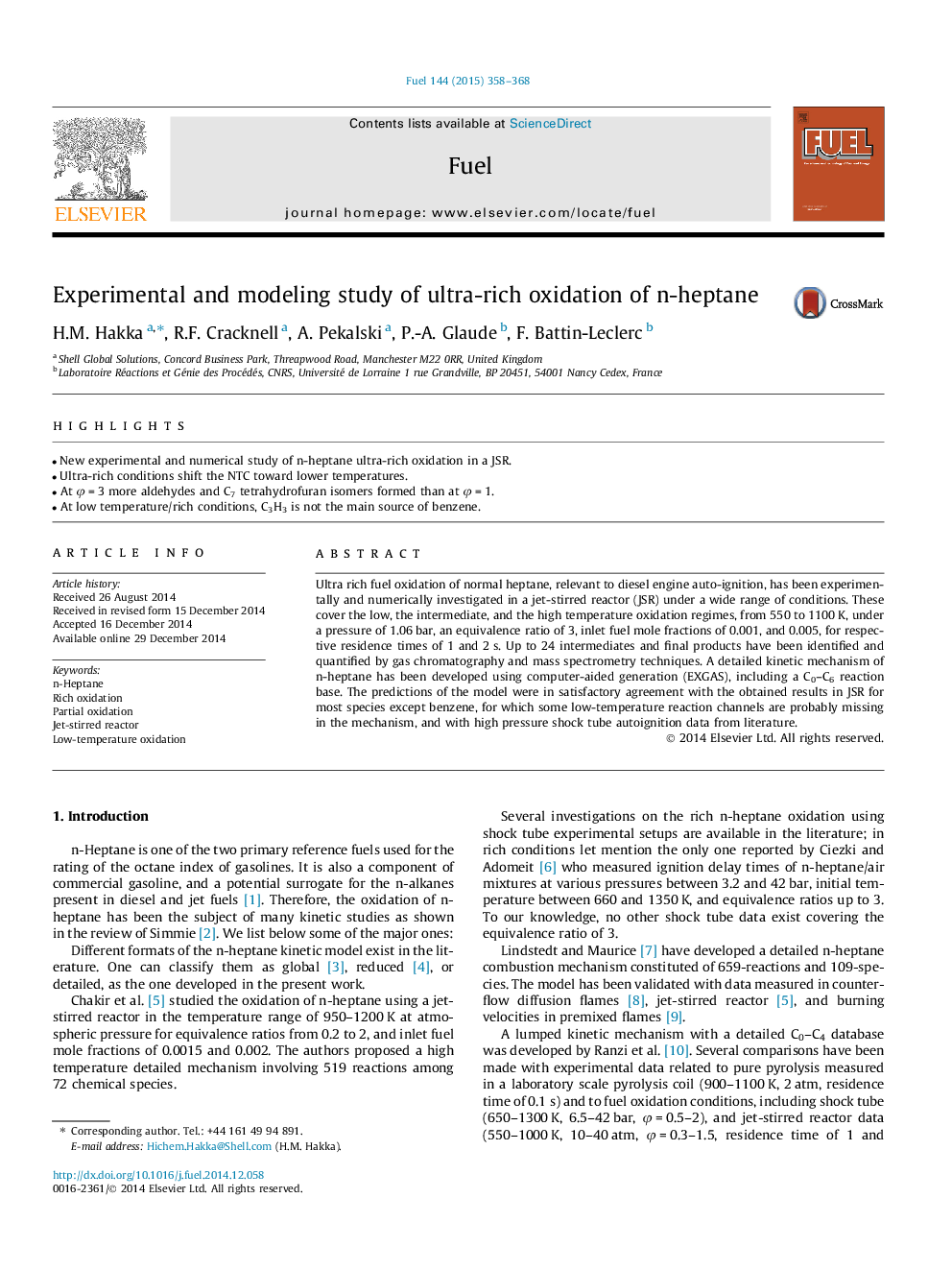| Article ID | Journal | Published Year | Pages | File Type |
|---|---|---|---|---|
| 205860 | Fuel | 2015 | 11 Pages |
•New experimental and numerical study of n-heptane ultra-rich oxidation in a JSR.•Ultra-rich conditions shift the NTC toward lower temperatures.•At φ = 3 more aldehydes and C7 tetrahydrofuran isomers formed than at φ = 1.•At low temperature/rich conditions, C3H3 is not the main source of benzene.
Ultra rich fuel oxidation of normal heptane, relevant to diesel engine auto-ignition, has been experimentally and numerically investigated in a jet-stirred reactor (JSR) under a wide range of conditions. These cover the low, the intermediate, and the high temperature oxidation regimes, from 550 to 1100 K, under a pressure of 1.06 bar, an equivalence ratio of 3, inlet fuel mole fractions of 0.001, and 0.005, for respective residence times of 1 and 2 s. Up to 24 intermediates and final products have been identified and quantified by gas chromatography and mass spectrometry techniques. A detailed kinetic mechanism of n-heptane has been developed using computer-aided generation (EXGAS), including a C0–C6 reaction base. The predictions of the model were in satisfactory agreement with the obtained results in JSR for most species except benzene, for which some low-temperature reaction channels are probably missing in the mechanism, and with high pressure shock tube autoignition data from literature.
